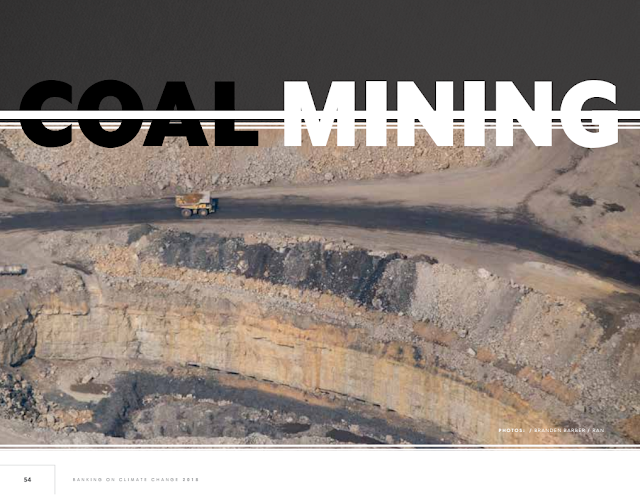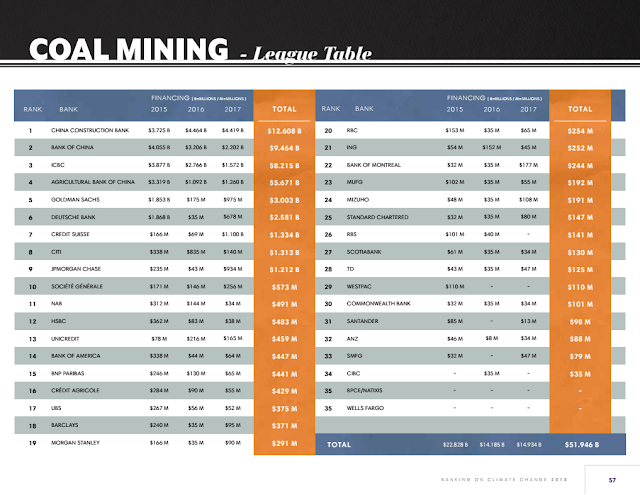The global coal mining sector is under pressure like never
before. An increasing number of analysts and industry watchers (including at
Goldman Sachs175) are declaring that thermal coal has now entered structural,
rather than cyclical, decline. Coal mining companies have to contend with the
fact that six countries, states, provinces, or cities have completely phased
out coal power since 2014, and an additional 17 haveannounced a coal power
phase-out date of 2030 or sooner. Among them are three G7 countries, eight EU
countries, and Beijing and Delhi — all committed to becoming coal-free. Also in
2017, South Korea, the world’s fourth largest coal importer, announced a major
reduction in its coal power reliance, a move that has dire implications for
Indonesian coal producers in particular.
This unstoppable trend is being
driven by ever-cheaper renewable energy in most parts of the world, as
countries look to revolutionize their energy systems in order to address the legacy
problems of coal: climate change and air pollution. In India, for instance,
where solar energy has already achieved price competitiveness with coal, the
government of Uttar Pradesh, the country’s most populous state, last year
cancelled seven new coal power plant projects.
Another factor highlighting the
writing on the wall for the coal sector is the global phenomenon of increased
global action to stop coal. From the Beyond Coal movement in the US and Europe,
to the Stop Adani campaign in Australia, to the effective grassroots anti-coal campaigning in Myanmar and other parts of
Southeast Asia, people are calling for clean, affordable alternatives to coal.
The surge of bankruptcies and
restructurings that affected a string of
global coal miners in recent years, especially in the United States, has
subsided due to a recovering global seaborne thermal coal price. However, a
projected drop in demand for coal in China and the United States looks likely
to trigger a coal price decrease and result in yet more bankruptcies. Also, the
recovery in U.S. coal production in 2017, while much seized upon by the
industry, looks anything but sustainable and is attributable to a surge in U.S.
coal exports in highly volatile global coal commodity markets.
Amidst this volatility, the coal mining sector has
nonetheless continued to receive support from commercial banks. Thisreport card
fnds bank fnancing for the sector rising in 2017, after a promising drop in
2016. Alarmingly, it is primarily U.S. and European banks that are increasing
their fnancing of coalmining, even though many have policies promising to
decrease their exposure.
At a time when a draft United Nations climate science
report finds that the 1.5 degree climate target could be breached as early as
the 2040s, the paucity of coal mining policy advances in 2017 is another brutal
reminder of banks’ bottom line climate irresponsibility. With varying degrees
of ambition, Barclays, Credit Suisse, Deutsche Bank, NAB, and Westpac were the
only banks assessed in the report card to have made new commitments to restrict
fnancing for coal miners in 2017; the Chinese banks at the top of the league
table remain sans policies.
With the advancements in coal policies of recent years
slowing to a trickle in 2017, and the rise in bank fnancing for coal mining
companies, there is increasing urgency for the banking sector to change its
approach. Data from the International Energy Association points to the big
elephant in the coal mining finance room: billions of dollars are being provided
via general corporate fnance (rather than fnancing tied to funding specifc coal
projects). Overwhelmingly it is commercial private sector fnance maintaining an
industry on its knees, defying global sentiment and urgent efforts to rein in climate change. Taking the necessary policy measures to
restrict andreduce corporate fnance for these coal mining companiesmust be top
of the agenda for banks, ahead of the next U.N. climate talks in Poland in late
2018.
DOWNLOAD E-BOOK CLICK HERE
DOWNLOAD E-BOOK CLICK HERE


No comments:
Post a Comment